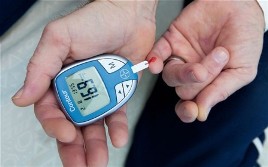This was a very informative CPD experience. We have many pupils in the school who have diabetes and we must be aware of their needs. The CPD went through the two differnt types of diabetes and how these can be controlled. Examples of the different pieces of equipment were there for staff to look at and try! The main message I took form the session was that it is important for staff, parents and medical staff to work together to ensure the wellbeing of the pupil. NHS staff were keen to point out that staff and parents must contact them if they need support. There are a huge number of pupils in the lothian who have diabetes and few nurses, so if support is required we must ask.
If pupils are going away on a school trip I recommend that a meeting set up with parents, and if required NHS staff to ensure that the correct plan and resources are in place for the duration of a trip. For example, medication may need to be changed for a sports activity trip. Continue reading Diabetes Workshop












